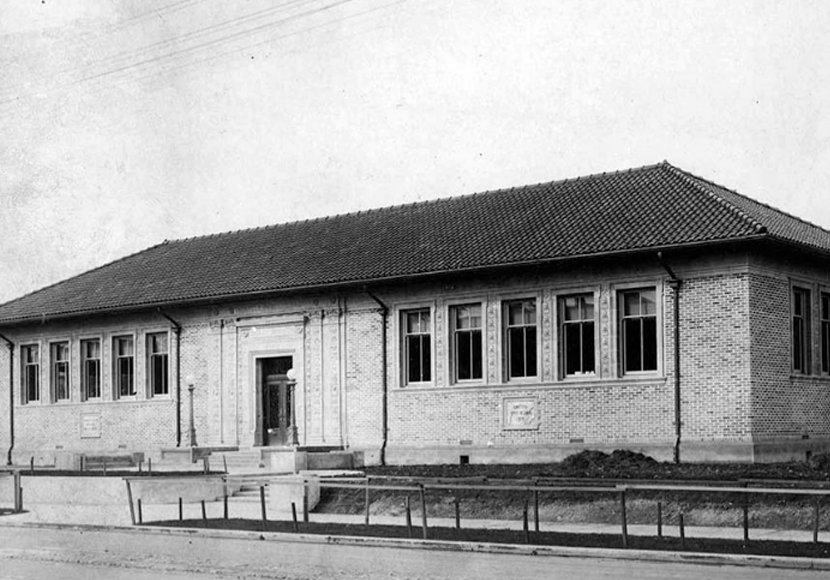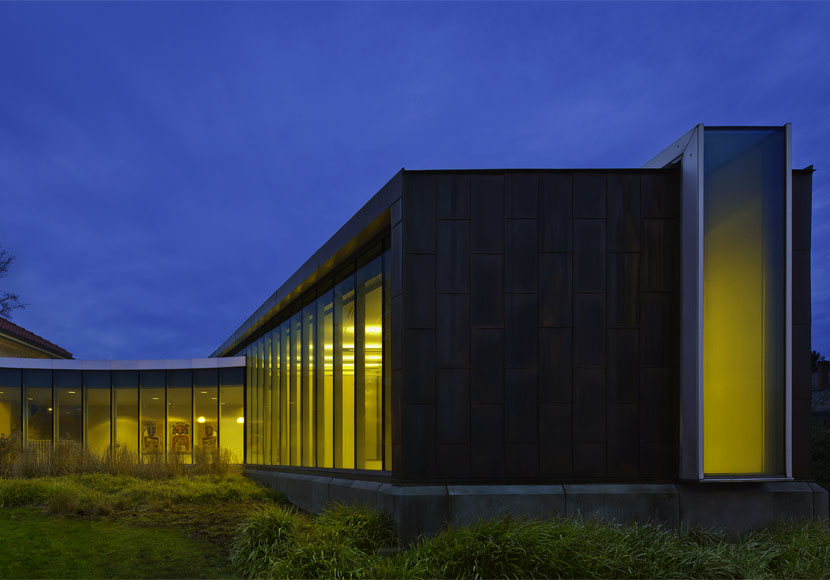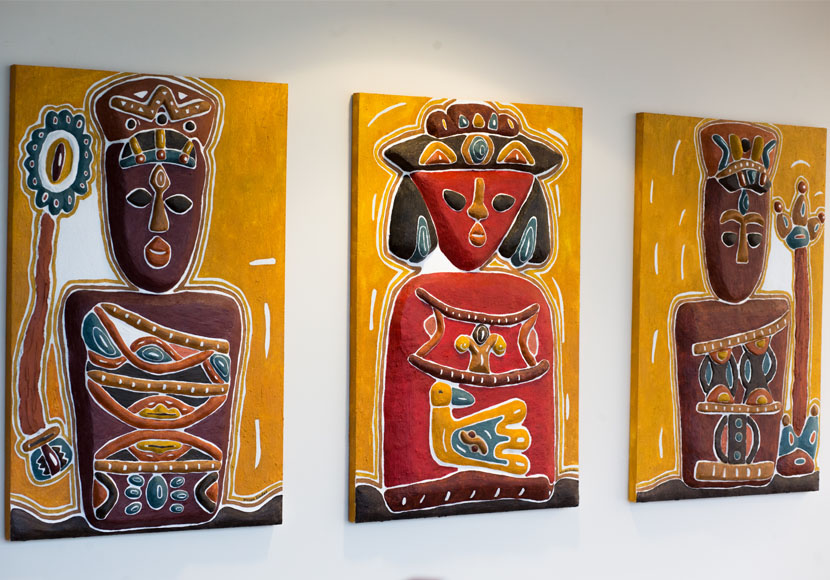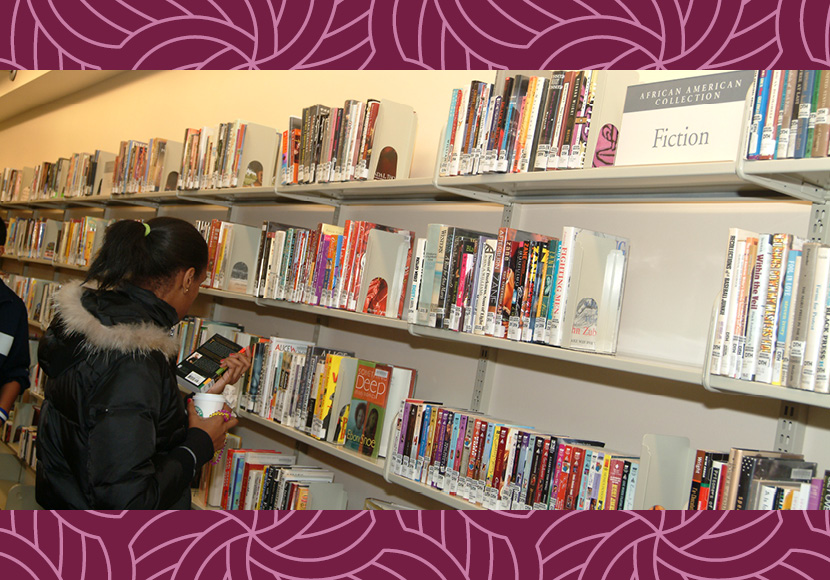Douglass-Truth Branch Highlights
The Douglass-Truth Branch was expanded and reopened Oct. 14, 2006. The building follows historic preservation guidelines of the original library, which is a city landmark. The Soul Pole, a 21-foot community artwork depicting 400 years of Black history, proudly greets visitors from the branch’s front lawn.
The Douglass-Truth Branch has over 10,000 items in its African American Collection, which was established in 1965 through a donation by the Delta Upsilon Omega chapter of Alpha Kappa Alpha Sorority.
History

Serving the Central District community since 1914
The Henry L. Yesler Memorial Library opened on September 15, 1914. It was the first Seattle library building not financed by industrialist Andrew Carnegie. It was named after Yesler to recognize his early efforts to start a library in Seattle.
Reflecting the changing population of its neighborhood, by 1932 the Yesler Branch featured books in 13 different languages. It was home to The Seattle Public Library's Yiddish, Hebrew, and Japanese collections. During World War II, the incarceration of Japanese Americans displaced many in the robust immigrant community. Meanwhile, thousands of Black Americans seeking jobs in war industries migrated to the Central District. It was the only neighborhood open to them given Seattle's discriminatory housing practices. The Library was slow to adapt to the changing community. Book circulation declined and budgets were cut.
In 1964, James A. Welsh became the Yesler Branch librarian. With the support of library management, he joined the Central Area Community Council. This allowed him to build partnerships with the Delta Upsilon Omega chapter of Alpha Kappa Alpha (AKA) sorority and he involved community leaders such as Roberta Byrd Barr, Ruth Marie Brown and Dr. Millie Russell. Together, they worked on ideas to serve the community and cultivate engagement with the Library.
In 1965 the Delta Upsilon Omega chapter of AKA donated books to launch what was then called the Negro Life and History Collection and is now called the African American Collection. By 1969, one third of the Yesler Branch’s adult circulation materials were Black literature and history. A new public meeting space hosted civil rights and youth groups. The groups included the Black Panthers, Radical Women, and the Students for a Democratic Society.
In 1975 the Central District wanted a name for their library that would better reflect their community. AKA leaders led a campaign and public vote, and on Dec. 5, 1975, the Yesler Branch was renamed the Douglass-Truth Branch after abolitionists Frederick Douglass and Sojourner Truth.
The Douglass-Truth Branch was upgraded in 1987 to provide ADA access. New interior stairs and landings were installed in the basement, and a new carpet and interior ramps were added in the west corridor. Workers installed a new ceiling in the meeting room.
In 2006, after a two-year closure, the building was expanded to twice the size with Libraries for All funding. The current Douglass-Truth Branch reopened Oct. 14, 2006.
The Douglass-Truth Branch now has a children’s area. More reading chairs are available, and patrons have better access to the African American Collection. The Delta Upsilon Omega chapter of AKA continues to be an important supporter of the library.
Architecture

The Douglass-Truth Branch is an example of Italian Renaissance design, with a brick and terracotta exterior and a red mission tile roof. The contemporary design of the 2006 Douglass-Truth Branch expansion preserved the historic building's form and defined the new structure. Most of the addition is below street level, to ensure the original Italian Renaissance style building dominates the site.
A grand staircase extends east to the lower level, which is bathed in light from an expanse of windows and skylights. The brick and terracotta exterior wall of the historic building is still visible from the stair landing and the hall to the meeting room. Copper was chosen for the addition's exterior because it ties in with the original building's copper gutters.
A new exterior entry was built in 1987. Based on the original entry design, it features wood-framed transom windows and a pair of panel type doors.
Architects: Schacht Aslani Architects, 2006; W. Marbury Somervell and Harlan Thomas, 1914
Art

Paintings, panels and sculptures by multiple artists
The branch features paintings of Frederick Douglass and Sojourner Truth by Eddie Ray Walker, 3-D panels by Vivian Linder and copper sculptures by Marita Dingus, a Storyquilt by Storme Webber, and the Soul Pole, which was installed in 1973 and conserved in 2021-22.
Named Spaces
Spaces named for donors include:
- Alpha Kappa Alpha Sorority Inc. Delta Upsilon Omega Chapter Exhibit Area
- Gayton Family Meeting Room
- Rae and Harry Kersch/Schultz Family Foundation Children's Area
- Louise Jones McKinney Reading Area
African American Collection

The collection features more than 10,000 items, including biographies, magazines, literature, music and films. The collection has a strong emphasis on Northwest materials and Seattle-area history with pamphlets, fliers and posters on local leaders and issues. Contemporary titles are regularly added.

